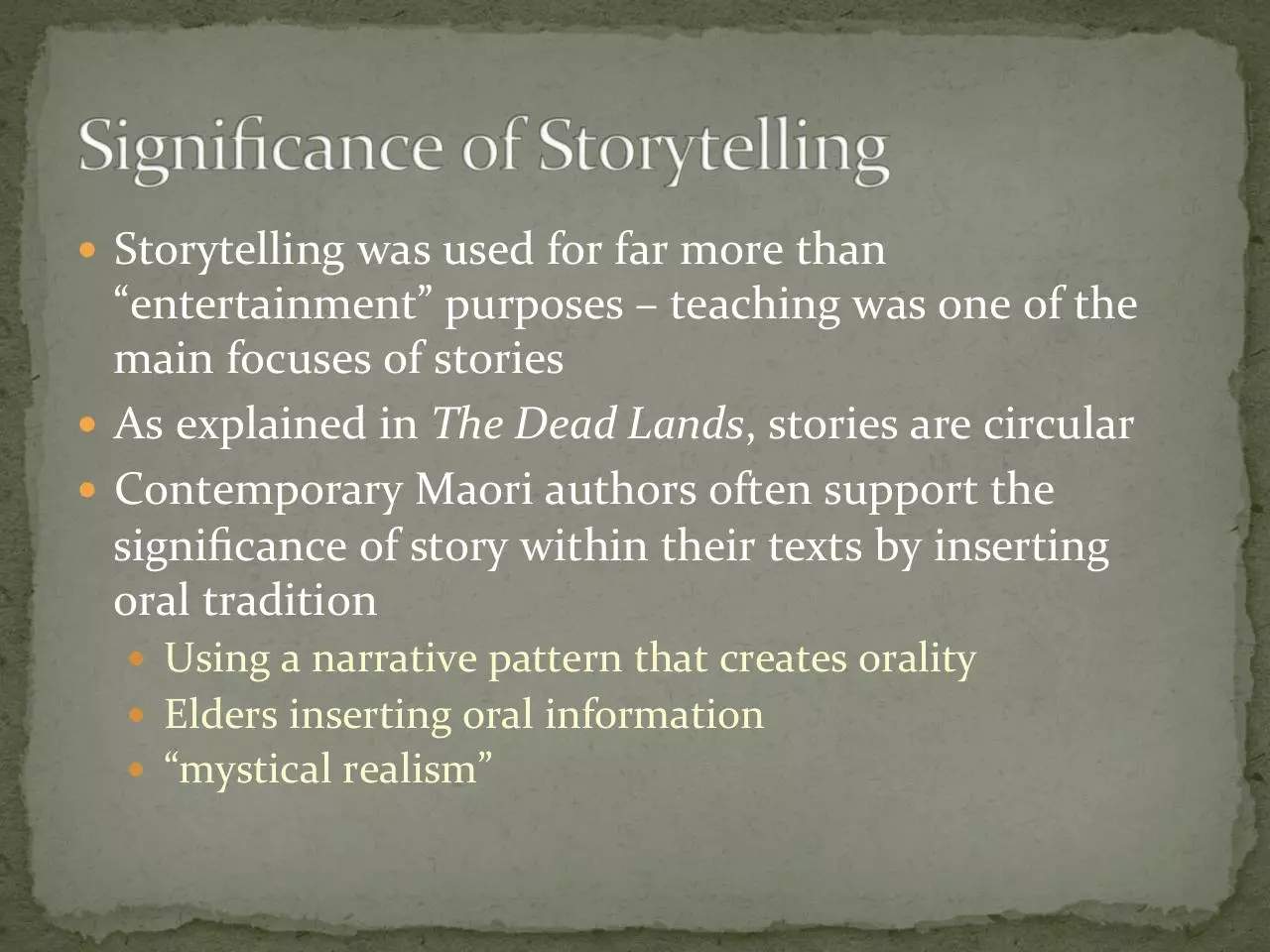SWAPACA Maori (PDF)
File information
Author: Michelle Nicole Boyer
This PDF 1.3 document has been generated by Microsoft PowerPoint / Mac OS X 10.6.8 Quartz PDFContext, and has been sent on pdf-archive.com on 28/04/2016 at 08:07, from IP address 73.24.x.x.
The current document download page has been viewed 640 times.
File size: 19.48 MB (19 pages).
Privacy: public file





File preview
Michelle Nicole Boyer-‐Kelly
University of Arizona
American Indian Studies Ph.D. Program
We must depart from a colonized cannon that
supposes history is written –for the Maori, history is
living, breathing, and is passed from generation to
generation.
There are multiple forms of storytelling, including:
Creation stories
Adventures of the gods
Universal stories
Iwi-‐specific stories
And, of course, there are stories that weave in and out
of more than one category
Storytelling was used for far more than
“entertainment” purposes – teaching was one of the
main focuses of stories
As explained in The Dead Lands, stories are circular
Contemporary Maori authors often support the
significance of story within their texts by inserting
oral tradition
Using a narrative pattern that creates orality
Elders inserting oral information
“mystical realism”
Released in 2014
Premier was held in Toronto
Limited release
Main US release was done on Netflix for a limited time
Otherwise, to purchase the film there is Amazon or
iTunes
Dir. by Toa Fraser (British-‐born)
Entire film is in Maori (subtitled in English)
Cast is made up entirely of Maori individuals
Features:
mau rakau – Maori armed martial arts
Maori
Joseph Campbell discusses that the most popular hero
quest is a cycle in which the hero is presented as a
warrior (esp. when it comes to film)
In Campbell’s cycle, the hero is exiled from his
homeland in order to prove himself as an adult
In the Maori quest cycle, the hero is often a warrior
(as per cultural expectations) that must prove himself
to honor his father
In The Dead Lands, these two cycles are blended into
a unique story for a mixed audience
Hongi (L) is a “boy” during the opening sequences of the
film – presented both visually and through the expressed
statements of others
After his father (R) and most of his tribe is slaughtered,
Hongi is exiled – part of this exile means that Hongi must
go after the “villain” and exact revenge
Download SWAPACA Maori
SWAPACA_Maori.pdf (PDF, 19.48 MB)
Download PDF
Share this file on social networks
Link to this page
Permanent link
Use the permanent link to the download page to share your document on Facebook, Twitter, LinkedIn, or directly with a contact by e-Mail, Messenger, Whatsapp, Line..
Short link
Use the short link to share your document on Twitter or by text message (SMS)
HTML Code
Copy the following HTML code to share your document on a Website or Blog
QR Code to this page

This file has been shared publicly by a user of PDF Archive.
Document ID: 0000366185.